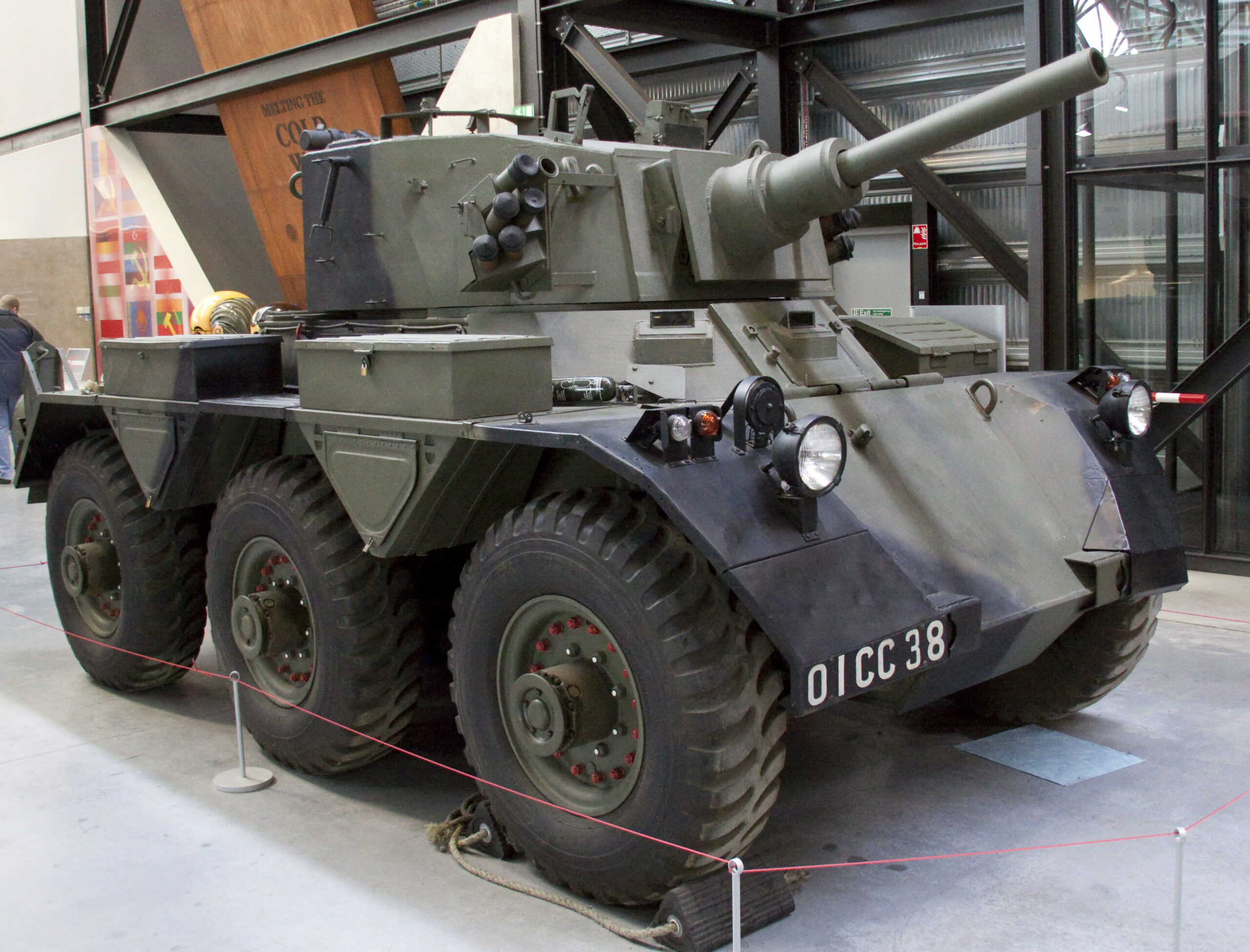The Alvis Saladin is a six-wheeled armored car developed and produced by the British company Alvis in the late 1950s. It was designed to serve primarily in reconnaissance and internal security roles, offering mobility, firepower, and protection for military and security forces. Here’s an overview of the Alvis Saladin and its operational history:
Development and Design
The development of the Alvis Saladin began in the early 1950s, driven by the British Army’s requirement for a wheeled armored vehicle capable of conducting reconnaissance missions and providing fire support. The Saladin was part of Alvis’s family of armored vehicles that also included the Saracen APC and later the Stalwart amphibious vehicle.
Design Features:
- Armor and Protection: The Saladin was built with an all-welded steel hull, providing protection against small arms fire and shell splinters. Its armor offered basic protection for the crew and vital components against frontal and side attacks typical in reconnaissance operations.
- Armament: The primary armament of the Saladin was a 76 mm L5A1 low-pressure rifled gun, which was effective against light armored vehicles and infantry positions. It was also equipped with a co-axial Browning M1919A4 .30 caliber machine gun for additional firepower.
- Crew and Mobility: The vehicle accommodated a crew of three: a commander, gunner, and driver. Powered by a Rolls-Royce B80 Mk 6A eight-cylinder petrol engine, the Saladin had a top road speed of approximately 72 km/h (45 mph) and could traverse rough terrain with its 6×6 drivetrain.
Operational History
The Alvis Saladin served with various armed forces and security forces around the world, fulfilling roles in reconnaissance, internal security, and peacekeeping operations. Its operational history includes deployments in several conflict zones and regions of instability during the Cold War era and beyond.
Key Operational Deployments:
- Cold War: The Saladin was extensively used by British and Commonwealth forces during the Cold War period, including deployments in Europe and other strategic locations as part of NATO defenses.
- Post-Colonial Conflicts: After decolonization, the Saladin saw action in various post-colonial conflicts and internal security operations, providing armored support and reconnaissance capabilities.
- Peacekeeping Missions: The Saladin was also deployed in peacekeeping missions under the United Nations (UN) flag, contributing to stability and security in regions affected by civil strife and unrest.
Variants and Upgrades
Over its service life, the Alvis Saladin underwent several variants and upgrades to enhance its performance and adaptability to evolving operational requirements. Variants included modifications to the armament, improvements in engine specifications for better mobility and reliability, and enhancements in communication and surveillance equipment.
Legacy
The Alvis Saladin left a lasting legacy as a reliable and versatile armored reconnaissance vehicle. Its combination of mobility, firepower, and protection made it a valuable asset in reconnaissance missions and internal security operations. Despite being retired from frontline service in many armed forces, the Saladin remains in limited operational use in some regions and is appreciated by military history enthusiasts and collectors for its role in armored warfare.
Conclusion
The Alvis Saladin armored car represents a significant chapter in the history of British military vehicles. Designed to meet the needs of reconnaissance and security operations, the Saladin provided armored protection, firepower, and mobility to military and security forces around the world. Its service in various conflicts and peacekeeping missions underscores its versatility and effectiveness as an armored reconnaissance vehicle, leaving a lasting legacy in military history and armored vehicle development.
